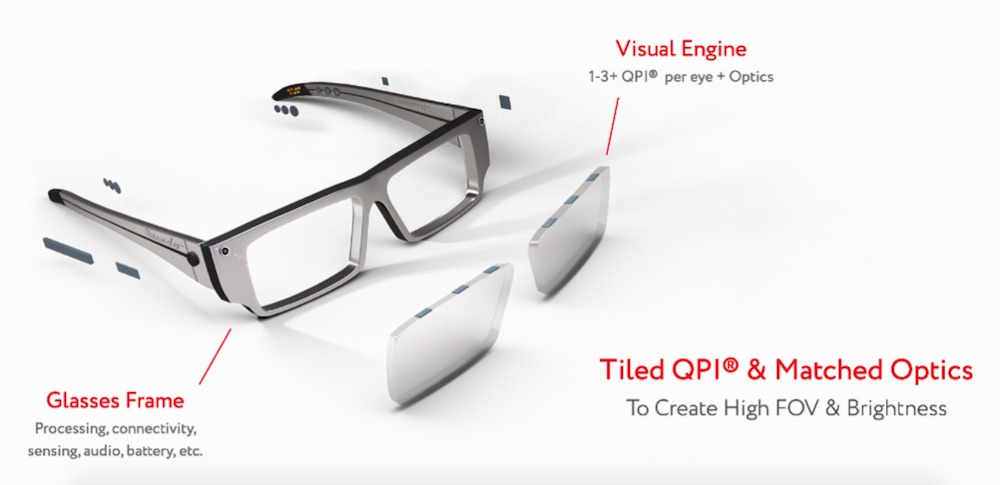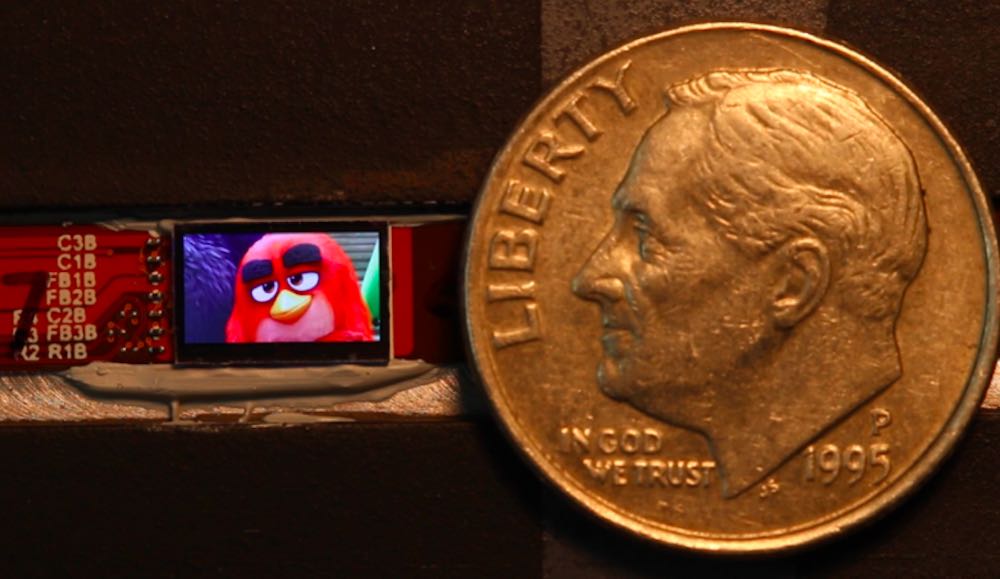Ostendo Unveils New AR Display With 150 Degrees Field of View
Even the most advanced Augmented Reality glasses still provide a too narrow field of view to appeal to end users. One company has developed a display technology that significantly increases the field of view (FOV). The advanced display technology company Ostendo has cumulatively raised more than $200 million to be used in building a new type of high-resolution see-through display as well as an optics system for Augmented Reality devices. Ostendo calls the new system Quantum Photonic Imaging (QPI) technology.

The display company has been around for more than a decade, having been founded in 2005 in Carlsbad, California. To date, the company has raised over $200 million in venture capital.
Ostendo has now unveiled a reference design of its new display technology which had a field of view of 150 degrees. This is three times the field of view of the Microsoft HoloLens. According to the company’s CEO Dr. Hussein El-Ghoroury, the display technology company has adopted a new approach in developing a bigger field of view. With the new technology, Ostendo has been able to tile several QPI displays against the edge of the lens while at the same time maintaining a small and lightweight display design. The QPI provides a new way of generating, controlling and also directing light into the eyes of the Augmented Reality (AR) headset user.
Ostendo’s technology is a revolutionary development. Many of the top players in the AR and display field are currently pumping billions of dollars in building the next wave of personal computing. So far, little of practical value has emerged out of these efforts. According to Ostendo’s VP of Visual Experience Jason McDowall, the missing link has been a new type of display as well as a new way of “generating and controlling light” and subsequently directing this light onto the AR user’s eyes while still giving users an unobstructed view of the real world.
Ostendo has showcased the reference design for Augmented Reality glasses in order to further attract investors and its first customers. The design will be very slim and will provide a field of view of 150 degrees. This would be three times the size of some of the high-end Augmented Reality devices already in the market such as the Magic Leap 1 and HoloLens 2. It would surpass even the field of view of most of the current virtual reality (VR) headsets.
This impressive field of view has been realized by interconnecting several QPI displays so that they reach the edge of the lens. However, this design will not affect the size and weight of the Ostendo AR glasses according to the company’s boss.

Why the Ostendo Display is a Gamechanger
In spite of years of research and billions of dollars in investments, it has been extremely difficult to channel the image through the lens and onto the eyes in see-through head-worn AR glasses even in cases where the device is bulky. This is because in see-through AR glasses (unlike liquid crystal displays in laptops, tablets and smartphones), the user isn’t directly looking at the screen but through a clear lens and onto the real world with the display positioned somewhere to the side.
Current displays such as those by Nreal and ODG use simpler optics approaches which are more applicable for dim displays but face a brick wall of fundamental physics limitations when you want to miniaturize the device further.
Additionally, there are other optics companies such as LetinAR and Lumus that could lend themselves easily to the Ostendo concept.
The Ostendo design will sacrifice brightness, a potentially higher resolution as well as the Red, Green and Blue color. Implementing the other traditional MicroLED approaches would also sacrifice some color and resolution. In a statement to Forbes, Niantic boss Ross Finman noted that it is extremely difficult to launch a new display technology into the market.
Forbes reports that Ostendo is planning to make its new optics technology work with other displays. Still, the new display technology has generated its fair share of excitement in the industry. One of the earliest investors in the display has been the futurist and Paramount Pictures’ Ted Schilowitz who has been so impressed by Ostendo’s display that he has acquired an equity stake in the company and joined Ostendo’s advisory board.
Schilowitz believes that Ostendo’s “unique and groundbreaking” AR display could help propel mixed reality devices beyond the “super early adopter and experimental stage” and help inspire more people. He emphasized the new display’s very small size as well as the fidelity and pixel pitch of Ostendo’s fully integrated RGB chipset as some of the factors that could see the glasses deliver the narrow form factor, weight and wider field of view to make it a viable mass market product.
According to El-Ghoroury, the QPI display is ready for production and the company is already engaging various prospective customers.
Ostendo hopes to play the role of Intel and AMD in the PC era; acting as key technological enablers whose innovations will power hardware vendors to manufacture cutting-edge wearable glasses. It will be long before you see the QPI-based products on your shelves but the company has already demonstrated that it is possible to create consumer-grade glasses with a 150-degree FOV.
Ostendo has various backers including Third Wave Ventures along with its major Limited Partner base such as the family offices of Pinault. LeFrak, Wolfen and Williams. It is also backed by David Falk and Phillip Sarofim.
On its official website, the company writes that it plans to open a 1,500 square meter company in 2020 that will have all the manufacturing steps.
Source: Forbes
https://virtualrealitytimes.com/2020/07/19/ostendo-unveils-new-ar-display-with-150-degrees-field-of-view/https://virtualrealitytimes.com/wp-content/uploads/2020/07/Ostendo-QPI-600x291.jpghttps://virtualrealitytimes.com/wp-content/uploads/2020/07/Ostendo-QPI-150x90.jpgAugmented RealityTechnologyEven the most advanced Augmented Reality glasses still provide a too narrow field of view to appeal to end users. One company has developed a display technology that significantly increases the field of view (FOV). The advanced display technology company Ostendo has cumulatively raised more than $200 million to...Sam OchanjiSam Ochanji[email protected]EditorVirtual Reality Times - Metaverse & VR
